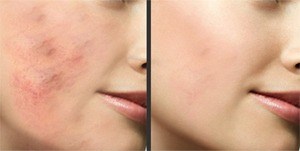Scar Management

Scars are the marks that are left on the skin after an injury is healed. Scars can be caused by trauma, cuts, burns, acne, and skin related diseases like vitiligo or chickenpox. Scars are thicker, and shinier than normal skin and can appear anywhere on the body. They are usually red or pink in color. Scars do not immediately disappear but fade in time. To make a scar as invisible as possible requires extra effort from both the patient and the surgeon.
There are different types of scars which are mentioned below:
- Keloid scar: these are thick, raised, and are often red or dark in color. They are caused by the over production of collagen that grows beyond the wound.
- Hypertrophic scars: these are also thick, red, and are raised. But unlike keloid scars they do not grow over the wound but instead remain within their boundary.
- Contractures: This occurs when the elastic nature of the skin is replaced with fibers which make the skin more rigid losing the ability to stretch and restricting movement. This can occur with burns or with the loss of a large area of skin from injury.
Non-surgical treatment includes:
- Creams or lotions Vitamin A, Vitamin E, or retinoic acid can be applied to the scar to improve the appearance and surface of the scar. Anti-mitotic agents (5-fluorouracil or bleomycin) prevent the cells from dividing in the scar region so that the scar will not spread. These anti-mitotic agents are not used in pregnant women.
- Laser therapy This treatment is more advanced and works very effectively. Light is emitted from a light source and the radiations emitted through this light are directly passed on the scar. Lasers use thermal (heat) energy to heat and destroy the targeted tissue.
- Silicon and collagen injections are used for treating scars that have deep cavities and holes with the goal of leaving behind an unnoticeable scar. A numbness cream is applied before the treatment. Collagen requires a skin test before use to assess for reaction and sensitivity. Silicone, FDA approved for ophthalmologic use, has been used in an off-label manner for over 25 years. It is permanent and requires multiple sessions to achieve results. Silicone is injected in droplets to help in the growth of collagen.
- Dermabrasion is also a widely used skin treatment to remove scarring and imperfections. This technique uses a hand held electronic tool with a wire brush and sanding tool. Sand like particles are applied on the skin to scrape off the scarred outer layers so new skin can grow in its place.
Surgical treatment includes:
- Z-plasty: This surgery is performed for scar revision and is useful with contracted scars. Z-plasty is a technique which redistributes tension on the wound by breaking up the scar into smaller units, making the scar less noticeable. In this technique, two flaps of the skin are replaced with a limb. These limbs arrange themselves to look like a ‘Z’. This may not be used to perform surgeries involving skin burns.
- W-plasty: This is performed on scars that are triangular in shape. W-plasty does not add any extension or length to the scar, but decreases the lateral tension of the scar. This is performed only on scars with excess adjacent skin attached.
Z- and W- plasty surgical techniques give a geometrical impression of the scar on the skin making the scar less noticeable and more natural.
Please consult with Dr. Resnik for more information of different types of scar treatment available for your situation.
